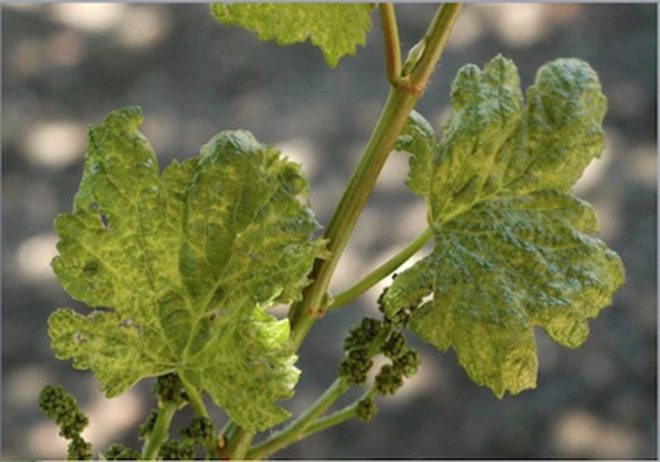As reported in our Biosecurity Alert last week, a surveillance strategy for Grapevine Pinot Gris Virus is being rolled out in South Australia this spring, in response to the detection of GPGV in Australia late last year.
Vinehealth Australia, Biosecurity SA, expert virologists Dr Nuredin Habili (Waite Diagnostics, The University of Adelaide) and Dr Fiona Constable (Crop Health Services, Agriculture Victoria) and the vine improvement and nursery sector have worked together to develop a considered approach to verifying the presence of GPGV in SA.
The GPGV surveillance approach will focus on targeted health status checks of high priority material, in particular:
- Propagation stocks (both germplasm and regional source blocks) as a means of predicting potential spread through commercial vineyards;
- Commercial vineyards that have reported to the Exotic Plant Pest Hotline, vines with symptoms similar to those associated with GPGV; and
- Vineyards identified with potential links to existing infected vines, as determined through trace back and trace forward audits.
“We feel this method of targeted sampling will provide us with the best opportunity to determine the potential distribution of GPGV across the state,” said Vinehealth Australia CEO Inca Pearce. “This information will then facilitate the most appropriate response and management decisions to be made.”
Vinehealth Australia is encouraging all growers to monitor their vines for symptoms of GPGV when shoots are between 5 and 30cm long. Symptoms associated with infection at this time include delayed budburst, leaf distortion and mottling and shortened internodes (refer to the AWRI GPGV Factsheet). These symptoms are most pronounced in spring and may be confused with early season bud mite damage, cold injury or herbicide damage.
Growers should monitor all varieties for GPGV symptoms, and in particular those varieties listed in the table below, which have reportedly tested positive overseas:
| Cabernet Franc | Cabernet Sauvignon | Carignan | Carmenere | Chardonnay |
| Grenache | Merlot | Muller Thurgau | Muscat Hamburg (Black Muscat) | Pinot Blanc |
| Pinot Gris | Pinot Noir | Red Globe | Riesling | Sauvignon Blanc |
| Shiraz | Tannat | Tempranillo | Touriga | Traminer |
If you notice anything unusual, please report it promptly to the Exotic Plant Pest Hotline on 1800 084 881.
For further information about GPGV or this surveillance strategy for South Australia, contact Vinehealth Australia on (08) 273 0550 or Biosecurity SA on (08) 8207 7900, email or visit vinehealth.com.au.
